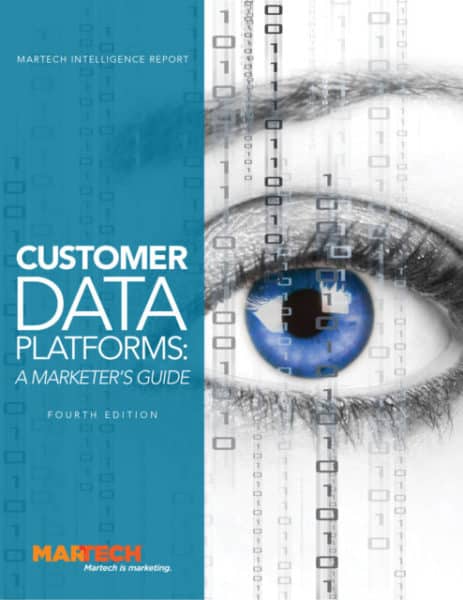
Marketers around the world are anxiously awaiting the deprecation of third-party cookies, searching for ways to adapt their campaigns. At our MarTech conference, Sharon Kratochvil, Vice President of Global Analytics at Michael Kors, talked about the strategies her team implemented to prepare their brand for this “cookieless future.”
“The first campaign that I was asked to run at Michael Kors took 12 hours to produce, which even five years ago was 11 hours and 59 minutes too long,” she said. “Needless to say, most of our marketing activations were batch and blast.”
Kratochvil’s team opted for a CDP (they went with ActionIQ’s) to organize and activate valuable first-party customer data, which is crucial in a future without third-party cookies: “Our vision was to leverage all of our customer data, not just subsets of that customer data. So that was key for us, as was the in-memory processing. We could define business variables on the fly, which is critical as we continue to evolve our marketing.”

The key to Michael Kors’ successful adaptation wasn’t the CDP itself — many marketers opt for different data management tools. The solution lay in the first-party data strategy their team enacted.
Use a CDP to gather first-party data
“The CDP allows us to be agile in our marketing,” Kratochvil said. “It gives us speed and flexibility in executing customer marketing campaigns and journeys.”
CDPs are designed to maximize the value of first-party customer data, making it a helpful asset for the coming third-party cookie deprecation. Kratochvil’s team used it to gather, organize and distribute this information to enhance their campaigns.
“It allowed us to automate all of our core campaigns, both digital and CRM, so those audiences were always fresh,” she said. “We pushed them regularly. We leveraged the most recent data.”
She added, ”It’s enabled us to seriously increase our segmentation and our personalization, both for marketing campaigns and journeys.”
Whether brands opt for a pre-built CDP, a custom CDP, or another type of data platform depends on their acquisition goals and priorities. The aim is to glean the most insights from your first-party data.
“The goal was always to get our customer first-party data to work for us,” said Kratochvil. “As we started to build out our single view of the customer from our data lake, any insight we generated could be activated.”

Looking to take control of your data? Learn about trends and capabilities of customer data platforms in the latest edition of this MarTech Intelligence Report.
Implement customer segmentation by channel
After getting their technologies in line for first-party data procurement and activation, Kratochvil’s team began segmenting their customers by channel. This made targeting customers easier while offering a testing environment.
“We started with segmentation by channel,” Kratochvil said. “We have multiple channels: outlet stores, lifestyle stores, e-commerce, and collection stores. It’s simple segmentation, but it’s very powerful. We tested things like the cadence, the content, and those messages that resonated within each channel.”
These tests were designed to prove the value of segmenting customers by channel using first-party data. This allowed them to easily personalize each interaction.
“Throughout this whole process, we created controlled tests so that we could prove channel segmentation did drive incremental revenue,” she said. “A key tenant was not just to do it, but to show that it worked and build confidence in the concept of segmentation and personalization.”
Kratochvil’s team adjusted channel segmentation on the fly throughout this testing process, further optimizing customer experiences while creating solid revenue streams.
“A good example is our win-back campaigns,” she said, “We might start with email, but then we would want to go to a digital channel if we weren’t getting a response.”
Identify customers using first-party data
After gathering their customer data and implementing channel segmentation, Kratochvil’s team used the insights gleaned to begin identification.
“Our first action was to introduce durable, server-side cookies so that we could have control and visibility into that data,” she said.
Server-side first-party cookies can help marketers glean much of the customer information that used to come from third-party cookies. And although they lack the retargeting capabilities of their third-party counterparts, first-party cookies can assist identity resolution strategies to give marketers valuable customer data.
“Once we started issuing durable IDs, we had to be able to then resolve those IDs,” Kratochvil said. “We have a CRM system with known customers and they have an ID. We created another site-based ID that follows that customer, but we have to be able to resolve identities, matching the durable ID to a customer record.”
Although Kratochvil’s team resolved those durable IDs, there was a large pool of unknown visitors. Their CRM alone wasn’t capable of handling this vast amount of data.
Identity resolution platforms have the potential to address these issues. They can connect customer identifiers across many platforms to identify individuals, all the while complying with consumer privacy laws.
Whatever strategies and technologies brands choose, they need to be ready for the third-party data changes that are coming.
“This third-party cookie deprecation is real,” Kratochvil said. “It’s going to have a business impact and we need to be prepared for it.”
Identity resolution platforms: A snapshot
What it is. Identity resolution is the science of connecting the growing volume of consumer identifiers to one individual as he or she interacts across channels and devices.
What the tools do. Identity resolution technology connects those identifiers to one individual. It draws this valuable data from the various channels and devices customers interact with, such as connected speakers, home management solutions, smart TVs, and wearable devices. It’s an important tool as the number of devices connected to IP networks is expected to climb to more than three times the global population by 2023, according to the Cisco Annual Internet Report.
Why it’s hot now. More people expect relevant brand experiences across each stage of their buying journeys. One-size-fits-all marketing doesn’t work; buyers know what information sellers should have and how they should use it. Also, inaccurate targeting wastes campaign spending and fails to generate results.
This is why investment in identity resolution programs is growing among brand marketers. These technologies also ensure their activities stay in line with privacy regulations.
Why we care. The most successful digital marketing strategies rely on knowing your potential customer. Knowing what they’re interested in, what they’ve purchased before — even what demographic group they belong to — is essential.
Read next: What is identity resolution and how are platforms adapting to privacy changes?




